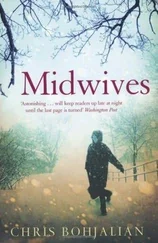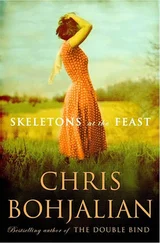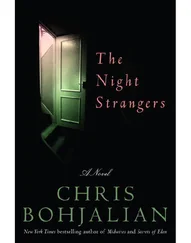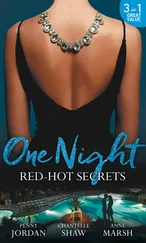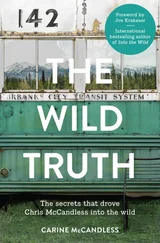But what a handsome death it is. No dementia, no incontinence, no children or loved ones bickering over whether to pull the plug or order one last round of chemo cocktails. Humans should be so lucky as to turn the kaleidoscopic colors of the forest when we pass .
Of course, the whole of autumn is about transience. The entire natural world seems to be shutting down, moldering, growing still. The days are short, the nights are long, and everything looks a little bleak-except for those leaves. Those kaleidoscopically lovely maples and birches and oaks allow us to gaze for a moment at the wonder of nature and to accept the inevitable quiescence of our own aura. Like so much else around us, it’s not the leaves’ beauty that moves us: It’s the fact their beauty won’t last .
There were a couple of reporters who expected an indictment any day now as the last of the leaves fell from the trees, and they were confident that when the time came, we would be arresting Stephen Drew. They called my office often that autumn and were constantly nosing through court papers. They were convinced that what had occurred that night in July was really pretty simple. Somehow Alice Hayward had gotten word to the parsonage that her husband was going ballistic, but by the time her ex-lover arrived, she was dead and her husband was passed out drunk. So Drew killed him.
Other reporters wouldn’t guess at a timetable for an indictment but groused that it was taking so long. And the longer it took, the more bizarre were the theories their readers started posting on their newspaper or television websites. The Haywards had been murdered by a Charlie Manson-like group of teens, a small cult whose leader was so brilliant that he had been able to cover up all traces of their presence. The Haywards had been manufacturing crystal meth at a sugarhouse in the woods and were killed by a customer. George Hayward’s retail ventures were fronts to launder money, and George and his wife had been murdered by some connection from Albany or the Bronx. Alice had shot George, and then later someone had-for reasons no one could conjure-strangled her.
I, of course, kept coming back to the simpler realities. There was Stephen Drew, and there was Heather Laurent. Though I thought it unlikely that Heather was involved, as a result of her admitted visit to the house the Tuesday after the Haywards’ deaths her prints and tracks were everywhere when we returned to gather more evidence. She had also been in Vermont the Sunday night the pair was killed and had some sort of connection to the venerable Pastor Drew. And oh, by the way, she was a total nut job. So I couldn’t write her off completely.
Still, I read the stories in the papers and on the Web, and I watched the drama unfold on the local news. And when reporters called, I told them-as I did all the time with all sorts of cases-that I really had nothing to say.
EMMET WALKER AND Andy Sullivan with the Vermont State Police were joined by a detective from their New York State comrades when they ventured to Statler and by a detective from the NYPD when they descended upon SoHo. They returned to Vermont late on a Wednesday night and came to my office in Bennington first thing Thursday morning to tell me what they’d learned. I had something that resembled a small feast waiting for them to thank them for their very long days-and nearly fourteen hours in the car-earlier that week. Not too far from our office is the sort of mom-and-pop bakery that specializes in angioplasty-inducing cinnamon buns and cake doughnuts. It always has the heavenly aroma of a confectionery sugar explosion. Somehow the place has survived both the economic ruts that a city like Bennington is prone to as well as the periodic bouts of gentrification. I brought back a basket of goodies for the boys, because cops of all kinds really do like doughnuts. It’s not a myth.
“The place was a horror-movie set,” Emmet said, chuckling a little bit and licking the sugar from a doughnut off his fingers. “I could just see the opening credits before my eyes as we walked around the cabin.”
“And was it an actual log cabin?” I asked. We were talking about Amanda Laurent’s home in the Adirondacks.
“Well, from a kit,” he said. “And it wasn’t the fact it was made of logs that disturbed me. It was dark, but lots of homes are dark. It was the carvings. Her partner-”
“They’re not married?”
“She said no. But they’ve been together a long time. Name is Norman Beckwith. He’s a bird carver.”
“And not real talkative,” said Andy. His chin was in the palm of his hand. Andy was a year or two shy of thirty, a nice young guy whose head was perfectly shaped for his buzz cut. His face was wholly without lines, and he looked a bit like a little boy from the Kennedy era who was playing dress-up in his dad’s trooper duds. Hard to imagine him actually needing to shave. Even at a traffic stop in his Ray-Bans, he couldn’t have been very intimidating.
“No?”
Emmet shook his head. “No. Really only came out of his studio under duress. Tall. Gaunt. Pale. He had one of those thin beards that followed the line of his jaw. It was just starting to turn white. Hair was a little greasy, but combed back. Dark brown and, like his beard, also starting to go gray.”
“And Amanda?”
“If you saw her on a city street, you would have said either heroin addict or over-the-hill runway model. Skeletal. Sunken eyes. Cheekbones that looked like razor ridge. Flat hair. A honey blond. But she’s very smart and very funny. Nothing like Norman. She’s his agent. He makes these birds, and she sells them. She smokes like a coal plant.”
“But it was the carvings that really gave me the shivers,” Andy volunteered.
“How so?”
“There must have been twenty-five or thirty of them,” the younger trooper said. “Eagles. Falcons. Kestrels. All birds of prey and all looking really pissed. And they were perfect. Most of them, anyway. Amanda sells them for him to these high-end galleries that focus on decoys and wooden animals, and to regulars who actually drive to his studio in Statler. At first I thought they were taxidermied birds. They were on shelves and tables, and a few were on the floor because there wasn’t enough shelf space on the walls. But what was weird was that their beaks were open. Wide open. And they looked sharp enough to cut glass.”
“Andy’s right,” Emmet said, and he raised his eyebrows in agreement. “They had attitude. They looked like they thought we were field mice. They wanted to eat us.”
“And only kill us after they’d started eating,” Andy added.
“You said most of them were perfect. Which ones weren’t?” I asked.
The two troopers glanced briefly at each other and then rolled their eyes almost simultaneously. “There was a wall with what I thought might have been ospreys, but the wings were wrong,” Emmet said.
“I didn’t know you knew so much about birds.”
He shrugged. “I know a bit. Anyway, the wings seemed fluffier. And they were shaped more like a harp and clearly weren’t going to offer the raptor the sort of wingspan a bird like that needs for a glide. So I asked Norman about them. And he said I was right, the wings weren’t really right for a raptor.”
“Very nice. Extra points for Emmet Walker on Name That Bird !”
“Go ahead and joke. But here’s what else he said. Well, mumbled. He said he had given those birds angel wings in honor of Amanda and Heather Laurent. Each of those ospreys has-and this is a quote-’the wings of an avenger.’”
“And this is in honor of Amanda and Heather?”
“So he said.”
“Why are they avengers?”
Emmet smiled a little wryly. “He didn’t have a good answer. He said that some angels are just meant to be avengers. That’s their assigned task.”
Читать дальше


